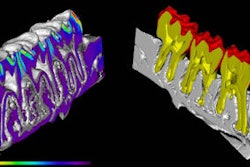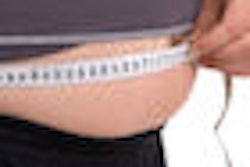Researchers from Temple University say they have found that a simple color-changing oral strip can help detect gum disease in a patient more quickly and easily than traditional screening methods.
Lead researcher Ahmed Khocht, D.D.S., an associate professor of periodontology at Temple's Maurice H. Kornberg School of Dentistry, and his team looked at the strip's effectiveness in detecting periodontal disease among 73 patients divided into three groups: healthy, those with gingivitis, and those with periodontitis. Color reaction was scored based on a color chart, and those scores were compared with scores from traditional clinical evaluation methods, such as plaque index, gingival index, attachment levels, and bleeding on probing.
They found strong correlations between the numbers from these tests and the numbers from the oral strip, suggesting that the strips would be a comparable screening method, according to the university.
"The strip changes from white to yellow depending on levels of microbial sulfur compounds found in the saliva," said Dr. Khocht in a press release. "A higher concentration of these compounds means a more serious case of gum disease, and shows up a darker shade of yellow."
Funding for this study was provided in part by ALT BioScience, a Kentucky-based company that develops and commercializes diagnostic and biomedical technologies.
Copyright © 2009 DrBicuspid.com



















